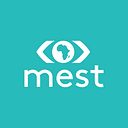Project Planning and Technical Scoping: Key takeaways from MEST Presents with WellBeam
This post was written by MEST’s Head of Community Relations, Lundie Strom, for MEST.
On April 22’s #MESTPresents webinar, MEST Africa welcomed Co-Founder of WellBeam and prior Full Stack Developer at GoFundMe, Pascal Odek, to lead our community through a webinar focused on product management, project planning and technical scoping.
Keep reading for Pascal’s top tips for how to establish your product roadmap, and how to best plan your product development with your team, time, and resources in mind.
1. “If you don’t plan, you’re planning to fail”
To begin, Pascal explained that a product roadmap helps to create a solid case for your product. In order to determine where to begin, first, ask yourself:
- Why are you building the product?
- How is it going to be valuable to your users?
- How will you make money from it?
Once you’ve established the above, consider your product roadmap a tool to look toward the future and determine forward-looking objectives and rough timelines. Now ask yourself:
- Where do you want your product to be by the end of the year?
- What features will it take you to get there?
When going through this exercise with his Co-Founder, Amee Devani, Pascal and the WellBeam team established that their goals were to 1. achieve better patient outcomes, and 2. approve efficiency for medical providers. This informed their product roadmap and next steps.
By answering these questions, you can better understand how each product in your pipeline will provide value to your customers — which is a great place to start.
2. Themes > features, and time horizons > deadlines
“A feature is not a stable unit considering the changing market. Technological innovations and customer needs cause your feature set to change quite often.”
With how quickly technology changes today, Pascal recommends that product teams shift their focus from developing features to establishing broader themes. For example, rather than “add a Facebook login button,” determine if you want to:
- Improve new user experience
- Increase conversion to a pro version
- Increase engagement in the first two weeks
- Improve the chat experience (WellBeam’s recent theme)
Why? Pascal says that due to features constantly changing, a feature-focused roadmap could derail you very easily. By focusing on broad themes, your product roadmap remains relevant despite frequent fluctuations in current tech trends.
In terms of timeframes and deadlines — keep them broad. Avoid assigning specific dates to complete an item by. Pascal recommends you plot on a monthly or quarterly level, and establish “time horizons,” not specific deadlines, to give yourself a more realistic window to accomplish your goals.
How do you start to establish themes? “Gather both quantitative and qualitative information from customers, partners, sales, support, and management.”
And once you’re ready to begin? Prioritize! If your team is still small and doesn’t have the capacity to start on all themes at once, queue them by importance.
“Do not address multiple themes at the same time,” Pascal says. “All of them are important, but if you don’t have the resourcing, don’t do parallel development — do sequential.”
Once your team is capable of working on multiple themes at once — “be sure to give related tickets or tasks similar tags to keep track easily.”
3. Sharing is caring, and one size does not fit all
Your product roadmap is meant to be shared beyond just the product team. In a previous role, Pascal told us, he’d oftentimes find himself writing code without full visibility of the desired end result — which made it difficult to keep track of what he was working towards.
Sharing your product roadmap with your entire team helps to:
- Increase understanding of where the company is going (ie. why the company is choosing to go in one direction, while the industry is going in another)
- Track progress made over time
- Set expectations for what is coming next
- Maintain team focus and accountability
- Improve team communication and engagement, by allowing multiple minds to weigh in on product goals and progress
However, when sharing your product roadmap with different teams and stakeholders, don’t assume one-size-fits-all.
Pascal’s tips for what to highlight in your product roadmap for certain departments included:
- Company executives and upper management — all elements outlined in your product strategy, plus any data regarding market size
- Marketing — product features and how your product will compare to similar features in the market
- Sales — release dates (again, remembering broad timelines rather than hard dates) and specifics about benefits/advantages for customers
- Engineers and developers — requirements, timelines, sprints, specific tasks/deliverables, exclusions and acceptance criteria
4. Iterate!
“Your roadmap is a living document. Once it’s completed, it’s not stagnant.”
Plan to review and adapt your product roadmap as frequently as both your company and customer needs change.
How often your product roadmap may need review might depend on the age of your product (3–5 years or younger being considered young) and the stability of your market:
Thank you, Pascal, for sharing your expertise with us.
Check out what’s next up on the MEST Presents webinar series here. See you next week!
WellBeam is hiring! Interested in Healthtech roles and have a relevant background? Email your resume to info@well-beam.com.
For more about WellBeam, click here.
